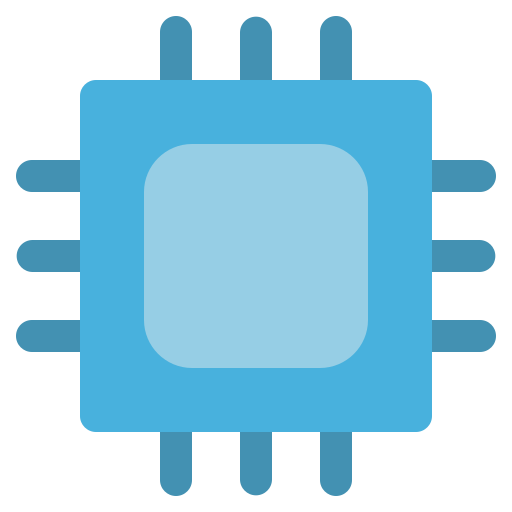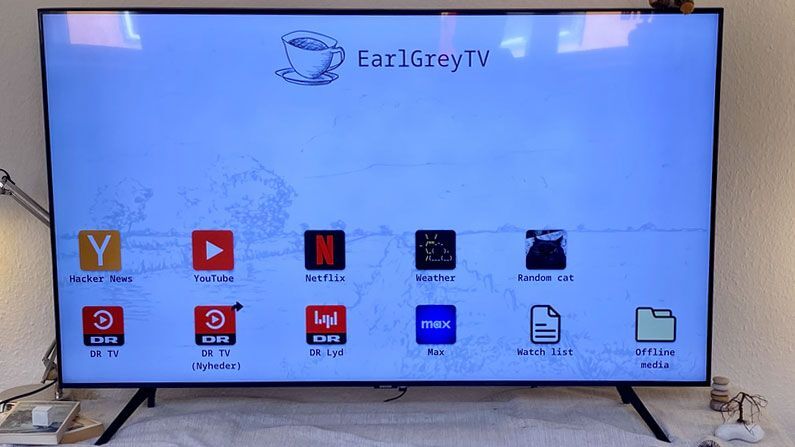Oh, it runs on a machine next to the tv. I thought he’d replaced the tv os.
There are already a number of systems that can be used in that fashion. Although they’re more geared towards the media archive users.
What is this number? I’d be interested in hearing more about other TV OS’s.
I’m currently enjoying LibreELEC (first on x86 but just moved onto an old Chromebook) and tried plasma bigscreen (not much movement on that.) I’ve heard of OSMC but haven’t flashed it on anything to try it out.
Sorry, systems was probably the wrong term. Bits of software is probably more accurate.
As far as purely dedicated systems go,I’m not sure if there really is an alternative to LibreElec these days (I don’t follow things on that front very closely though).
No worries, I appreciate your time!
It there’s a distro made that you could flash to a roku stick (whatever they’re called) or something similar, it might become an actual alternative. Maybe even just a small box that launches firefox (or chromium), connects to the wifi and is controlled by your smartphone with KDEConnect, and provides an interface adapted to TV sets, would do.
Good that this dude is working on EarlGreyTV. Hopefully it becomes a viable product.
So, a worse Kodi. 🤦
It very much depends on your use case. Kodi is great for displaying content from a personal media library, but support for most streaming services is tacked-on at best and non-existent at worst.
There’s certainly a discussion to be had about whether maintaining a local media library is a “better” choice than streaming, but the fact remains that for people who want to use streaming services, this project is attempting to fill a very real hole in the FOSS ecosystem.
Seems like adding a local library to this would be trivial, thereby getting the best of both worlds.
for streaming services, you could build an AndroidTV box, right?
Wouldn’t this have the benefit of HD content? AFAIK some streaming services provide an SD stream on Linux.
Can you get worse than Kodi? 😆
I mean I’ve tried it several times and it gets the wrong movie info 98% of the time. I ain’t got time to manually fix the info for my hundreds of movies and TV shows, that Jellyfin seems to get right.
And don’t tell me “go do this and that”, that’s just telling me “you’re doing it wrong”. I installed it, let it scan (each movie/show is in it’s own folder) and it’s just… Wrong.
I really want Kodi to work, it should be my solution, but getting all this stuff wrong isn’t acceptable. These are titles that aren’t obscure in any way: Big Trouble in Little China, for example. As far as I know, there’s only one movie with that name, but Kodi calls it something completely different.
It was several years ago for me, before I “used Linux”, and was just a copy-paste user of Kodi and pi-hole.
anyway - my experience was similar, Kodi just wasn’t worth it. I’m sure “it was the user” but either way, I stopped. Meanwhile the pi-hole is still going strong. And now all of our PCs are linux, so it’s not from my inability to learn.
I kinda started tinkering with a setup like this on an HTPC. Basically an Ubuntu box, firefox and some plugins. The plugins are ad blockers, and one to make YouTube use the “TV” interface.
All it really needed was a launcher to switch between the different web apps.
Software engineer Carl Riis has announced his first hardware project, dubbed EarlGreyTV. It is a Smart TV project that differentiates itself from the usual ‘idiot box’ dominating your living room by leveraging the wonders of Linux and Firefox, plus an old laptop. Though Riis humbly admits that EarlGreyTV doesn’t compete with today’s state-of-the-art domestic solutions in every way, it has a few worthwhile advantages — customizability, control, and privacy.
Riis was inspired to create EarlGreyTV because he “didn’t really like existing Smart TV interfaces.” Perhaps more importantly, he added, “The short version of why I don’t like them is tracking, ads, and lack of control.” The concept behind EarlGreyTV is easy to understand, but the project wasn’t without its stumbling blocks. It took a modicum of finessing on both the hardware and software sides of the equation to get the project to a point where it works well for non-techy people.





